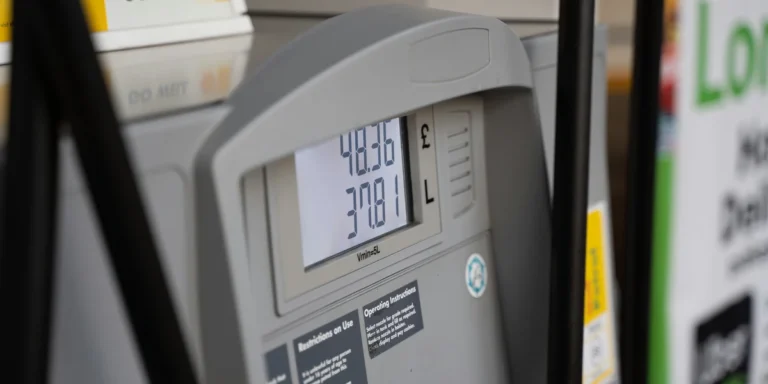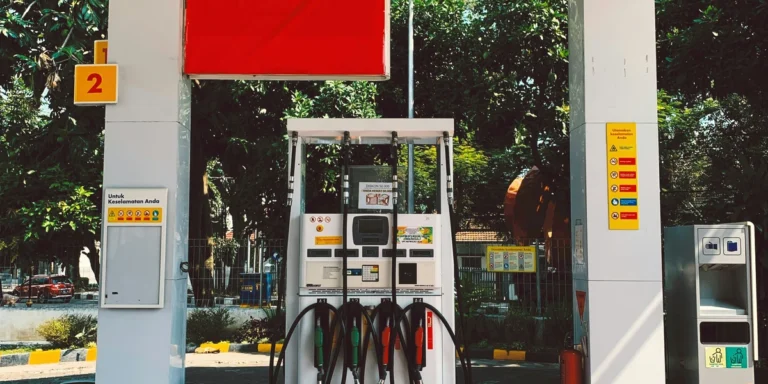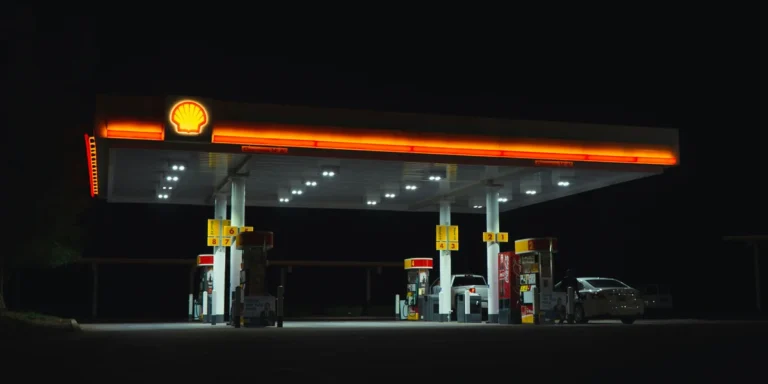If you’ve ever stood at a gas pump staring at that yellow-labeled E85 nozzle offering significantly cheaper fuel, you’ve probably wondered: can I mix this with regular gas? The answer depends entirely on what type of vehicle you drive. Let’s clear up the confusion about mixing E85 and regular gasoline once and for all.
The Short Answer: It Depends on Your Vehicle
If you have a flex-fuel vehicle (FFV): Yes, absolutely! You can mix E85 with regular gas in any proportion without worry. In fact, that’s exactly what flex-fuel vehicles are designed to do.
If you have a regular (non-flex-fuel) vehicle: No, you shouldn’t intentionally mix E85 with regular gas. However, if you accidentally put E85 in your tank, don’t panic—it’s usually not catastrophic, and there are straightforward ways to remedy the situation. So don’t panic! Keep calm, and read on.
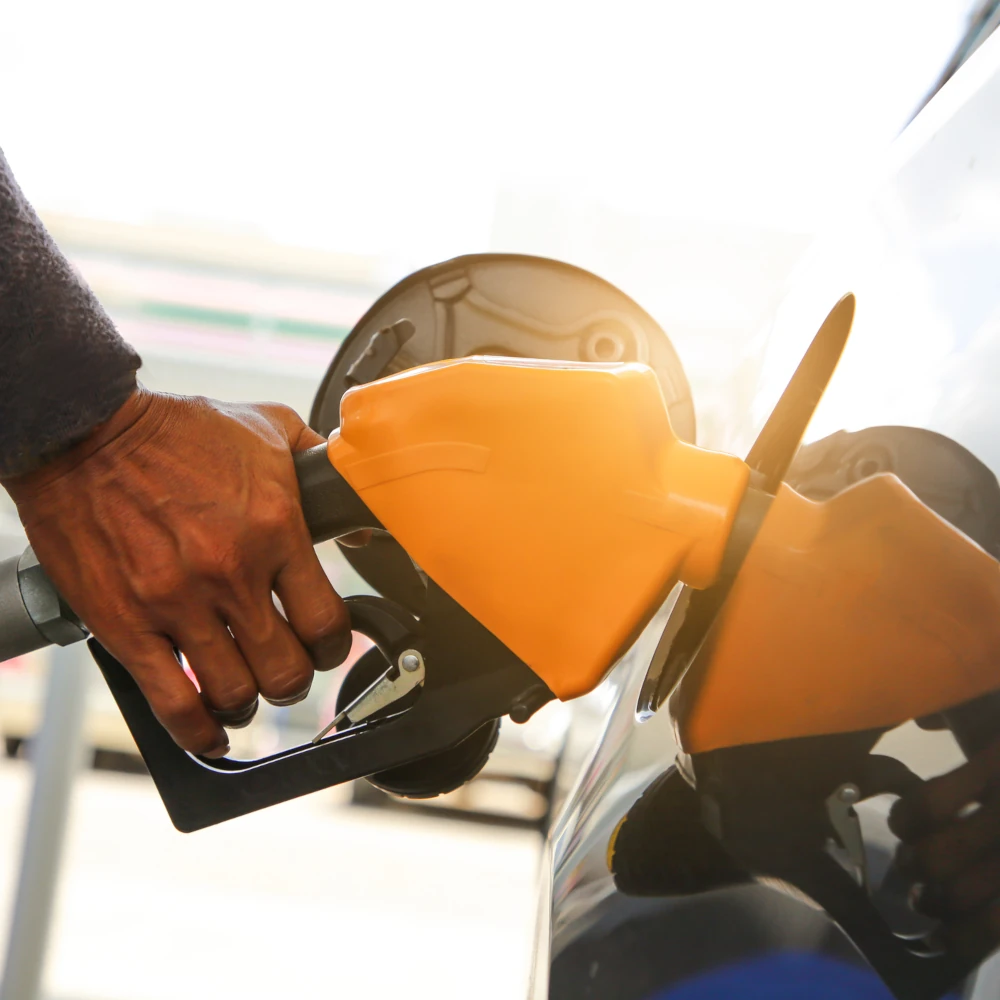
What Is E85?
Before we dive deeper into mixing fuels, let’s understand what E85 actually is. E85 is a fuel blend containing 51% to 85% ethanol and 15% to 49% gasoline. The “85” in its name can be misleading because the actual ethanol content varies by season and location. During winter months, E85 sold at the pump might contain as little as 51% ethanol to help with cold-weather starting, while summer blends typically contain higher ethanol concentrations.
Ethanol is a renewable fuel made from plant materials such as corn, and it’s already present in most gasoline sold in the United States at 10% concentration (called E10). What makes E85 special is its much higher ethanol content, which gives it different combustion properties than regular gasoline.
Can You Put Regular Gas in a Flex-Fuel Vehicle?
Yes, absolutely—and without any concerns whatsoever. This is one of the most common questions about flex-fuel vehicles, and the answer is straightforward: flex-fuel vehicles can run on regular unleaded gasoline, premium gasoline, E85, or any mixture of these fuels.
In fact, many flex-fuel vehicle owners primarily use regular gasoline simply because E85 isn’t widely available in their area. Your FFV will run perfectly fine on regular gas, and you don’t need to worry about:
- Engine damage
- Reduced performance
- Voiding your warranty
- Needing to “flush” the system before switching fuels
The “flexible” in flex-fuel means exactly that—your vehicle’s fuel system can handle the full spectrum from pure gasoline (E0) to E85, and everything in between. The vehicle’s sensors automatically detect what fuel you’re using and adjust the engine’s operation accordingly.
How Flex-Fuel Vehicles Handle Mixed Fuels
Flex-fuel vehicles are engineered with several key modifications that allow them to seamlessly switch between fuel types:
Fuel composition sensors: These sensors detect the ethanol-to-gasoline ratio in your tank in real-time.
Advanced engine computer: The ECU (engine control unit) receives information from the fuel sensors and automatically adjusts fuel injection rates, spark timing, and air-fuel mixture to optimize performance for whatever blend is in your tank.
Ethanol-resistant components: FFVs use stainless steel fuel lines, specially designed fuel pumps, and ethanol-resistant seals and gaskets throughout the fuel system. Regular vehicles use materials that can deteriorate when exposed to high concentrations of ethanol over time.
Variable fuel injection: The engine computer can increase fuel injection by up to 30-40% when running on E85, since ethanol requires more fuel volume than gasoline to produce the same amount of energy.
This means you can literally fill up with E85 on Monday, top off with regular gas on Wednesday, and add more E85 on Friday—your FFV doesn’t care and will adjust automatically every time.
Can You Mix E85 and Regular Gas in a Flex-Fuel Vehicle?
Yes—mixing is not only safe but completely normal for FFV owners. You don’t need to empty your tank before switching between fuels. You can add E85 to a tank that contains regular gas, or add regular gas to a tank with E85. Your FFV’s systems will detect the blend and adjust instantly.
Many FFV owners regularly mix E85 and regular gas to:
- Balance cost savings with fuel economy
- Extend driving range on road trips
- Take advantage of E85 availability when convenient
- Create custom blends based on local fuel prices
There’s no “correct” ratio you need to maintain, and you don’t need to calculate percentages or worry about exact mixtures. The beauty of a flex-fuel vehicle is that it handles all of this automatically.
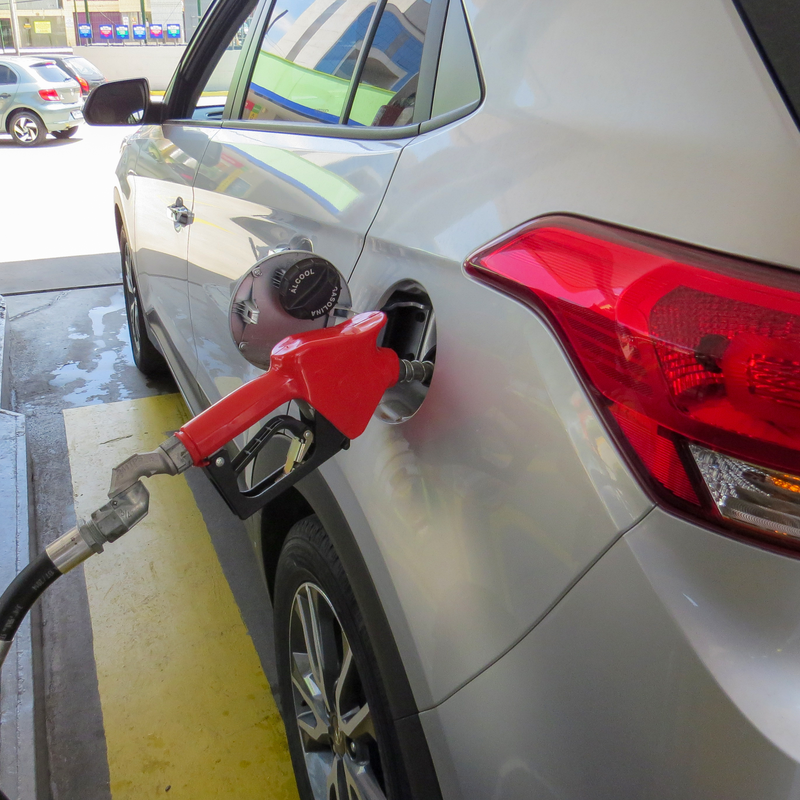
What Happens If You Accidentally Put E85 in a Non-Flex-Fuel Vehicle?
This is where things get more serious, but it’s important to understand that accidentally putting E85 in a regular vehicle is usually not catastrophic. It’s a surprisingly common mistake, and most modern vehicles can handle it without permanent damage—especially if it’s just one tank.
Immediate Effects You Might Notice
If you’ve accidentally filled your non-FFV with E85, here’s what you might experience:
Check engine light: This is the most common symptom. Your vehicle’s oxygen sensors will detect abnormal readings because E85 burns differently than gasoline, triggering diagnostic codes related to lean fuel mixture or fuel system issues.
Reduced performance: Your engine may feel sluggish, hesitate during acceleration, or have difficulty maintaining power. This happens because your engine computer is calibrated for gasoline and can’t provide the additional fuel volume that E85 requires.
Rough running: You might experience rough idling, engine stumbling, or jerky transmission shifts as the engine struggles to compensate for the wrong fuel.
Hard starting: Your vehicle might be difficult to start, especially in cold weather, because E85 has different volatility than gasoline.
The good news is that, according to experts and mechanics who deal with this regularly, these symptoms typically won’t strand you on the side of the road. The Renewable Fuels Association confirms that “one time misfueling should not cause any long-term damage” and that “consumers are usually able to navigate the issue with little trouble.”
Why It Happens (But Isn’t Usually Disastrous)
The reason a full tank of E85 won’t immediately destroy your engine is that modern fuel systems have some built-in adaptability. Here’s what’s happening under the hood:
Your oxygen sensors detect the issue: When E85 is burned, it creates a leaner exhaust (more oxygen, less fuel) than gasoline. Your oxygen sensors detect this and send signals to the engine computer.
The computer tries to compensate: Your ECU attempts to correct the lean condition by increasing fuel injection. However, with pure E85 in the tank, the required adjustment is beyond the normal operating range of a non-flex-fuel vehicle.
Fuel trim limits are exceeded: Your engine computer has maximum and minimum fuel adjustment limits built in. When these limits are exceeded, it triggers the check engine light and may activate reduced-power “limp home” mode to protect the engine.
The key point is that most modern vehicles (roughly 2001 and newer) were designed with some ethanol tolerance because E10 became standard nationwide. This means the fuel system components can tolerate ethanol exposure, at least temporarily.
What You Should Do If This Happens
If you went to an e85 gas station and realize you’ve put E85 in your non-flex-fuel vehicle, here’s the recommended course of action based on how much E85 you added:
If you caught it immediately (added only a gallon or two):
- Stop filling immediately
- Add regular gasoline to fill the rest of the tank
- The resulting mixture will likely be around E20-E30, which many vehicles can tolerate
- Drive normally and monitor for check engine light
- Refill with regular gas as soon as possible to further dilute the E85
If you filled half a tank or more:
- Fill the rest of the tank with regular gasoline to dilute the E85
- The check engine light will likely come on—this is normal
- Drive the vehicle conservatively (avoid heavy acceleration or high speeds)
- Refill with regular gas at half-tank or quarter-tank to continue diluting
- After 2-3 tanks of regular gas, the E85 will be sufficiently diluted
- The check engine light should turn off on its own after several drive cycles once the issue is resolved
If you filled a completely empty tank with E85:
This is the most serious scenario, but you still have options:
- The safest approach is to have the vehicle towed to a service station and have the fuel tank drained and refilled with regular gasoline
- Alternatively, if the vehicle runs (even poorly), you can add as much regular gasoline as possible to dilute the E85, then drive conservatively to burn through the fuel
- Most mechanics agree that simply diluting the fuel and burning it off is sufficient—you typically don’t need to replace fuel system components unless damage has already occurred
Long-Term Concerns and When to Worry
One accidental fill-up: According to automotive experts and mechanics who regularly deal with E85 misfueling, a single tank of E85 in a non-flex-fuel vehicle typically causes no permanent damage. Modern fuel systems are more resilient than older systems.
Repeated use: This is where real problems can develop. Continually using E85 in a non-flex-fuel vehicle can cause:
- Corrosion of fuel system components not designed for high ethanol content
- Deterioration of rubber seals, gaskets, and fuel lines
- Damage to the fuel pump
- Clogged fuel filters
- Potential warranty void if the manufacturer discovers E85 was used
The key takeaway is that one mistake is usually forgivable, but don’t make it a habit.
Can You Put E85 in a Non-Flex-Fuel Vehicle Intentionally?
No, you should never intentionally use E85 in a non-flex-fuel vehicle, even if you’ve heard that some people do it to save money or boost octane. While some car enthusiasts modify non-flex-fuel vehicles to run on E85 (by reprogramming the engine computer and upgrading fuel system components), a stock non-flex-fuel vehicle should never use E85 regularly.
The risks include:
- Voiding your vehicle’s warranty
- Expensive fuel system repairs
- Poor performance and fuel economy
- Potential engine damage under load
If you want to use E85 to save money, the correct approach is to purchase a flex-fuel vehicle, not to use E85 in a regular vehicle.
How to Identify If Your Vehicle Is Flex-Fuel Compatible
Many drivers don’t realize they own a flex-fuel vehicle because FFVs look identical to their regular gasoline counterparts. Here’s how to check:
Yellow gas cap: Since 2008, most automakers use yellow gas caps on flex-fuel vehicles (General Motors started this in 2006).
Badge or label: Look for “Flex-Fuel,” “FFV,” or “E85” badges on the rear of your vehicle, near the model designation, or inside the fuel door.
Capless fuel fillers: If your car has a capless system, look for a yellow ring around the fuel nozzle opening.
Owner’s manual: Check your vehicle documentation, which will clearly state if your vehicle is flex-fuel compatible.
Online resources: Visit FuelEconomy.gov and use their vehicle search tool to look up your specific year, make, and model.
According to the U.S. Department of Energy, there were more than 20.9 million flex-fuel vehicles in the United States as of 2022, so there’s a good chance you might own one without realizing it.
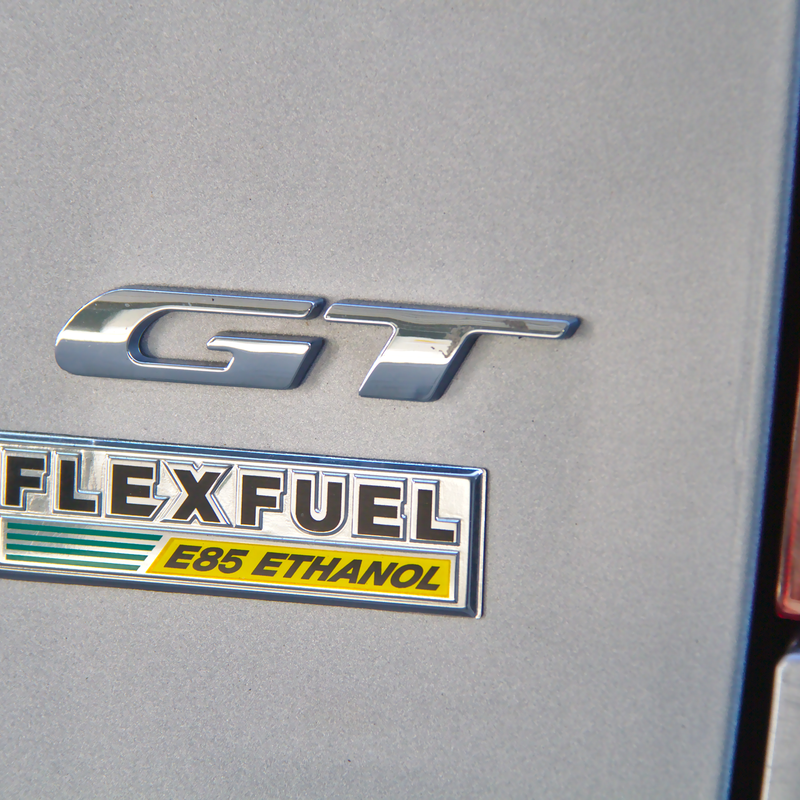
The Benefits of Mixing E85 with Regular Gas (in FFVs)
For flex-fuel vehicle owners, mixing E85 with regular gasoline offers several strategic advantages:
Cost Savings
E85 typically costs $0.50 to $1.00 less per gallon than regular gasoline. However, remember that E85 contains less energy per gallon, so your fuel economy will decrease by approximately 15-30%. The actual savings depend on:
- The price difference in your area
- How much E85 you use in your blend
- Your vehicle’s specific fuel economy characteristics
Many FFV owners find that a 50/50 blend provides a good balance between cost savings and acceptable fuel economy.
Higher Octane Rating
E85 has an octane rating of approximately 100-105, compared to regular gasoline’s 87 octane. This higher octane can:
- Benefit performance engines by allowing more aggressive timing
- Reduce engine knock in high-compression engines
- Potentially increase power output in turbocharged vehicles
Environmental Considerations
E85 can provide important reductions in greenhouse gas emissions compared to petroleum-derived gasoline. While the exact environmental benefit is debated (considering the agricultural inputs needed to produce corn ethanol), using E85 does reduce dependence on petroleum.
Engine Cleaning Properties
Ethanol has natural solvent properties that can help prevent carbon deposits from building up in your fuel system and combustion chambers, potentially leading to lower maintenance costs over time.
The Drawbacks of Using E85 or E85 Blends
Before you rush to fill up with E85, understand these important trade-offs:
Significantly Reduced Fuel Economy
This is the biggest drawback of E85. The U.S. Energy Information Administration reports that ethanol contains about 33% less energy than pure gasoline. In practical terms, expect:
- 15-27% fewer miles per gallon when using pure E85
- Proportionally less reduction when using blends
Real-world example: If your vehicle normally gets 25 mpg on regular gas, you might only get 18-21 mpg on pure E85, or about 22-23 mpg on a 50/50 blend.
Limited Availability
While there are over 4,500 stations offering E85 in the United States, most are concentrated in Midwest corn-producing states. If you don’t live near E85 stations, the convenience factor may make regular gasoline more practical.
Cold Weather Performance
E85 can be difficult to start in cold weather, which is why winter blends contain less ethanol. In extremely cold conditions, you might need to add more regular gasoline to ensure reliable starting.
Practical Advice for Flex-Fuel Vehicle Owners
If you own an FFV and want to experiment with E85 blending:
Track your costs: Keep detailed records for several tanks to determine if E85 saves you money given your specific fuel economy impact.
Start with conservative blends: Begin with 25% E85 / 75% regular gas and adjust based on your experience.
Consider your driving needs: Use more regular gas for long trips where you need maximum range; use higher E85 blends for short commutes where fuel economy is less critical.
Don’t overthink it: Your FFV can handle any mixture—just fill up with whatever fuel makes sense at the moment.
Monitor station prices: Use apps like E85 Prices or the DOE’s Alternative Fuels Data Center station locator to find the best deals.
Frequently Asked Questions
Q: Will mixing E85 and premium gas in my FFV give me better performance? A: Yes, mixing E85 (with its 100-105 octane) with premium gas (91-93 octane) will result in very high-octane fuel that can benefit performance engines. However, you’ll still experience the fuel economy reduction from the ethanol content.
Q: If I accidentally put a few gallons of E85 in my non-FFV, do I need to have the tank drained? A: Probably not. If you fill the rest of the tank with regular gas, the resulting blend will likely be diluted enough (around E20-E30) that you can simply drive it out over a few fill-ups. Monitor for check engine lights and drive conservatively.
Q: Can I switch back and forth between E85 and regular gas in my FFV without any waiting period? A: Yes, absolutely. You can alternate between fuels on consecutive fill-ups with no issues. Your FFV adjusts instantly to whatever fuel is in the tank.
Q: Does using E85 void my warranty on a non-flex-fuel vehicle? A: It may, depending on the manufacturer and what damage occurs. If you have a non-FFV and accidentally used E85, it’s best not to make it a regular practice, as repeated use could lead to warranty issues if problems develop.
Q: My check engine light came on after accidentally using E85 in my regular car. How long until it goes off? A: Once you’ve diluted the E85 with regular gas and driven through several tanks, the light should turn off automatically after several “drive cycles” (starting the car, driving it, and turning it off). If it doesn’t go off after you’ve burned through 2-3 tanks of regular gas, have the codes cleared at an auto parts store or mechanic.
The Bottom Line: Know Your Vehicle Type
The key to understanding whether you can mix E85 with regular gas comes down to one simple question: do you have a flex-fuel vehicle?
For flex-fuel vehicle owners: Mix away! You have complete freedom to use E85, regular gas, premium gas, or any combination. Your vehicle is specifically designed for this flexibility. Experiment with different blends to find what works best for your budget and driving needs.
For regular vehicle owners: Don’t intentionally use E85. However, if you accidentally put E85 in your tank, don’t panic—it’s usually not catastrophic. Dilute it with regular gas as soon as possible, and you’ll likely be fine. One accidental fill-up rarely causes permanent damage to modern vehicles.
If you’re unsure what type of vehicle you have: Take five minutes to check. Look for a yellow gas cap, check for FFV badges, or look it up in your owner’s manual or at FuelEconomy.gov. Knowing whether you have a flex-fuel vehicle empowers you to make informed decisions at the pump.
The ability to mix fuels is one of the key advantages of owning a flex-fuel vehicle, giving you flexibility to optimize for cost, performance, or convenience based on your specific situation. But that flexibility only works if your vehicle has the right equipment—so make sure you know what you’re driving before you reach for that yellow-labeled E85 pump.
Additional Resources
For more information about E85, flex-fuel vehicles, and fuel specifications, consult these authoritative government sources:
- U.S. Department of Energy Alternative Fuels Data Center: Comprehensive information on E85 fuel, flex-fuel vehicles, and station locations
- U.S. Environmental Protection Agency E85 Information: Official EPA guidance on E85 use and emissions benefits
- U.S. Energy Information Administration: Data and analysis on ethanol fuel consumption and blends
These resources provide official information on fuel standards, vehicle compatibility, and the latest updates on E85 availability and regulations.



